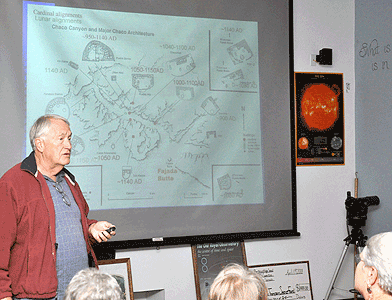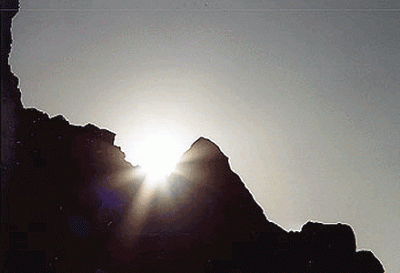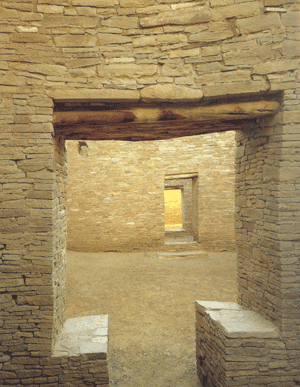By Jamie Folsom
Berthoud Recorder
The inhabitants of Chaco Canyon obviously paid attention to the sky. And although it’s not clear anyone actually resided in the 30 central buildings, the structures are all oriented to the patterns and events of the sun and moon –– equinoxes and eclipses, among others. This hundreds-of-years-old village stands as a monument to the human pursuit of information, both to those who once built Chaco, and to those who seek answers about the ancients.
Steve and Irene Little have spent a lifetime studying the skies as professional astronomers. Their presentation at the Little Thompson Observatory Friday evening was filled with images and anecdotes of their travels in northwestern New Mexico and Chaco Cultural National Historical Park. The Littles summarized what is known and documented about the ancient inhabitants of Chaco Canyon:
They built 30-foot wide roads that were paved with clay.
They hauled enormous redwood logs without the aid of horses or wheels.
They mapped the intricate and overlapping cycles of the moon and the sun.
Their architecture stands solid after hundreds of years and captures solar eclipses with careful placement of rocks in unique structures called “sun daggers.”
They used the horizon as a calendar to mark seasons for planting and harvest.
But, even those who spend a great deal of time studying and thinking about ancient observatories are still puzzled by the facts. Sometime near the year 1130 C.E. the Chaco people (ancestors of the modern Pueblo tribes) disappeared from the area, leaving behind containers of discarded and broken jewelry, leaving no written record.
And at the end of the Littles’ presentation, the LTO public star night was more questions than answers for everyone. Not a bad experience for the curious. It only means that among those who visit Berthoud’s observatory or its sister facility in Estes Park still have reason to keep their eyes on the sky and keep their minds open to new ways to explore the past.


